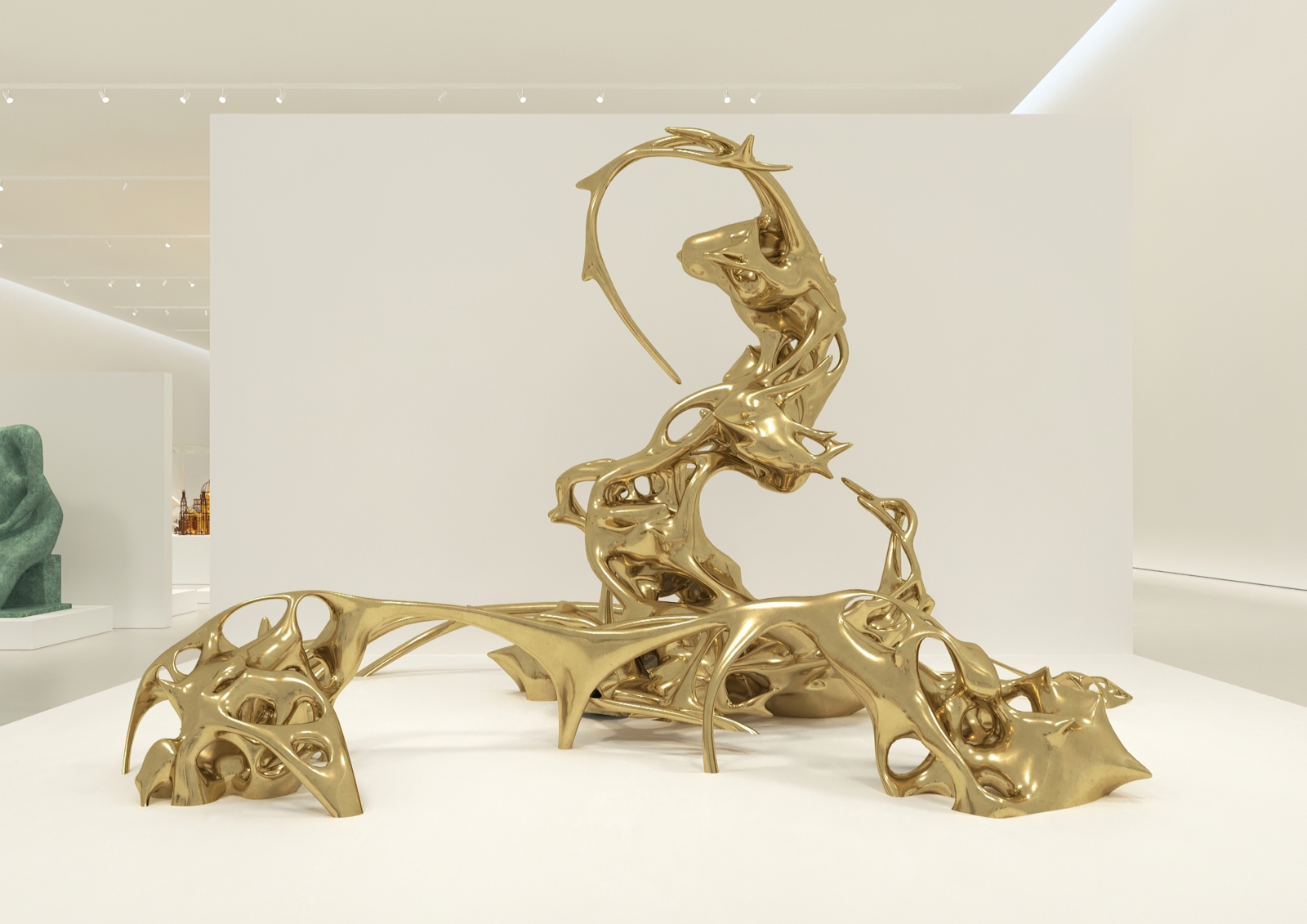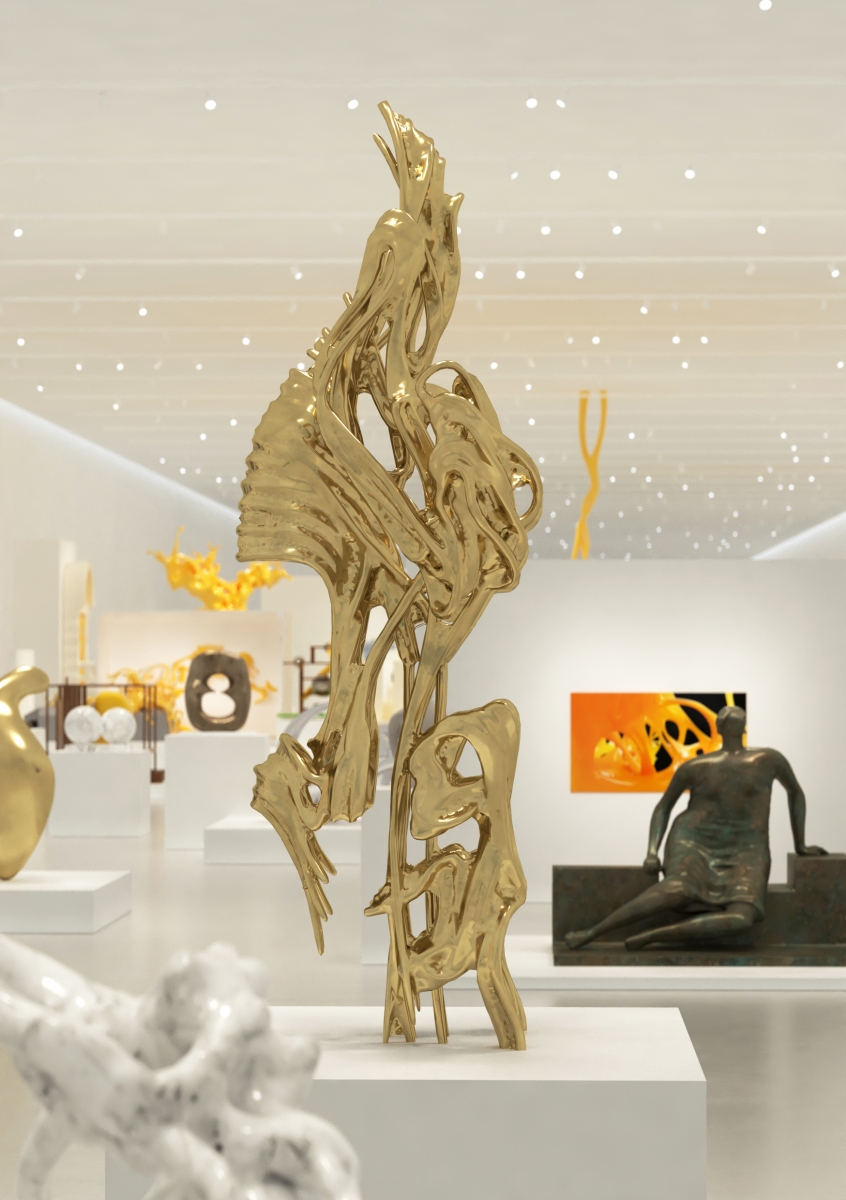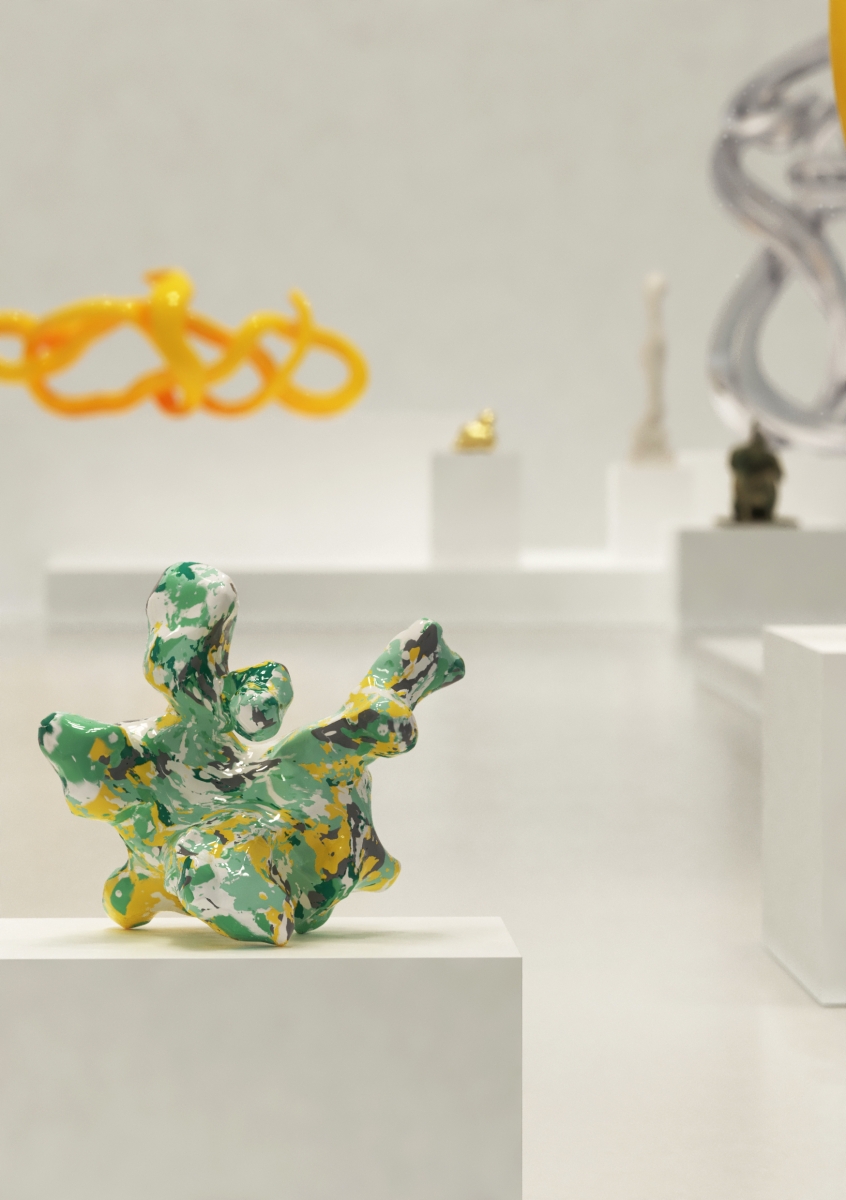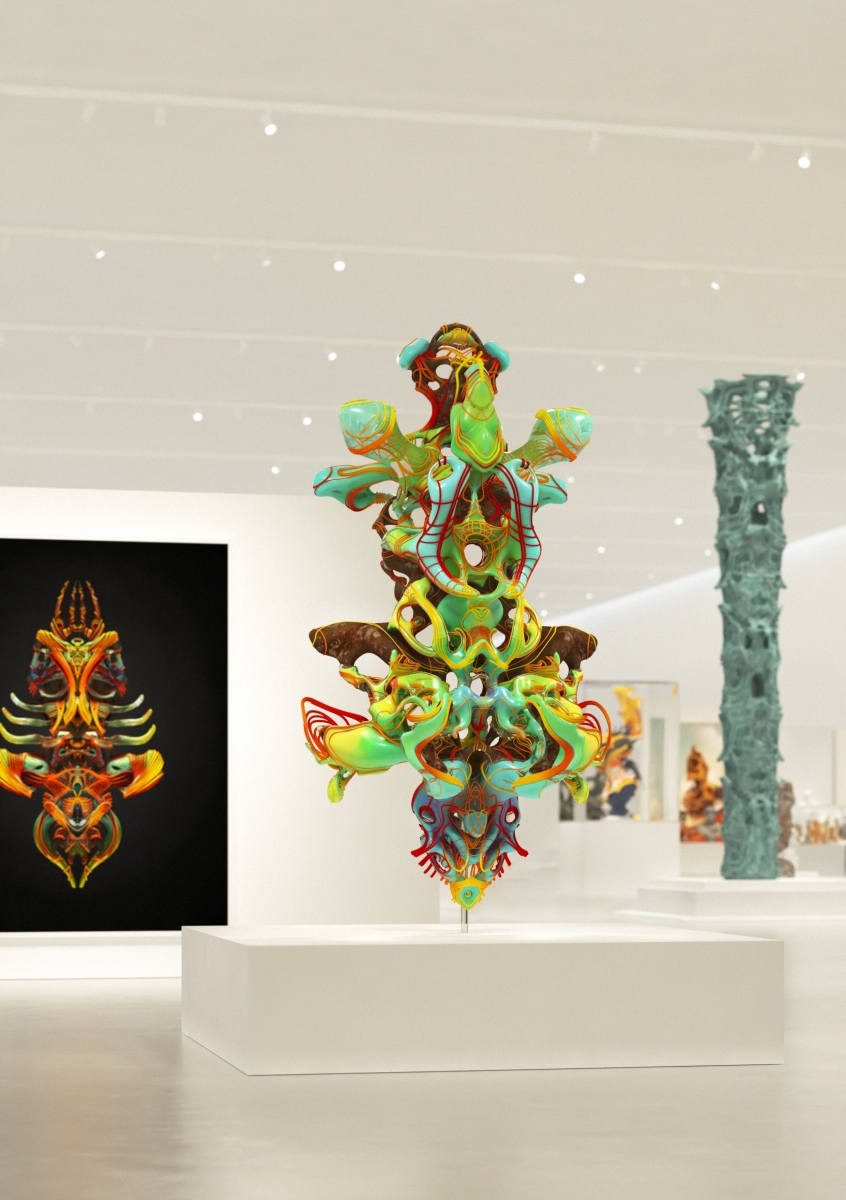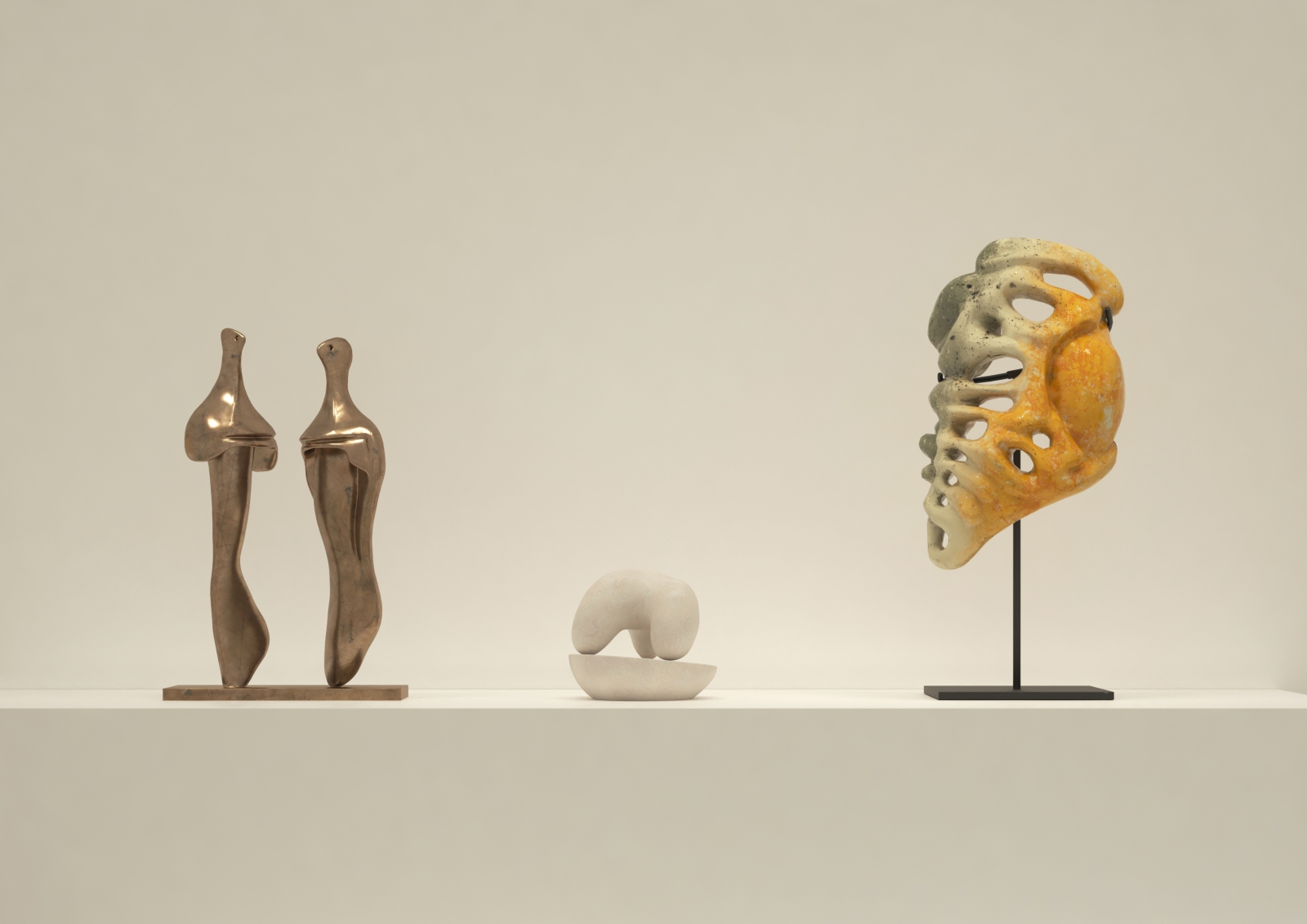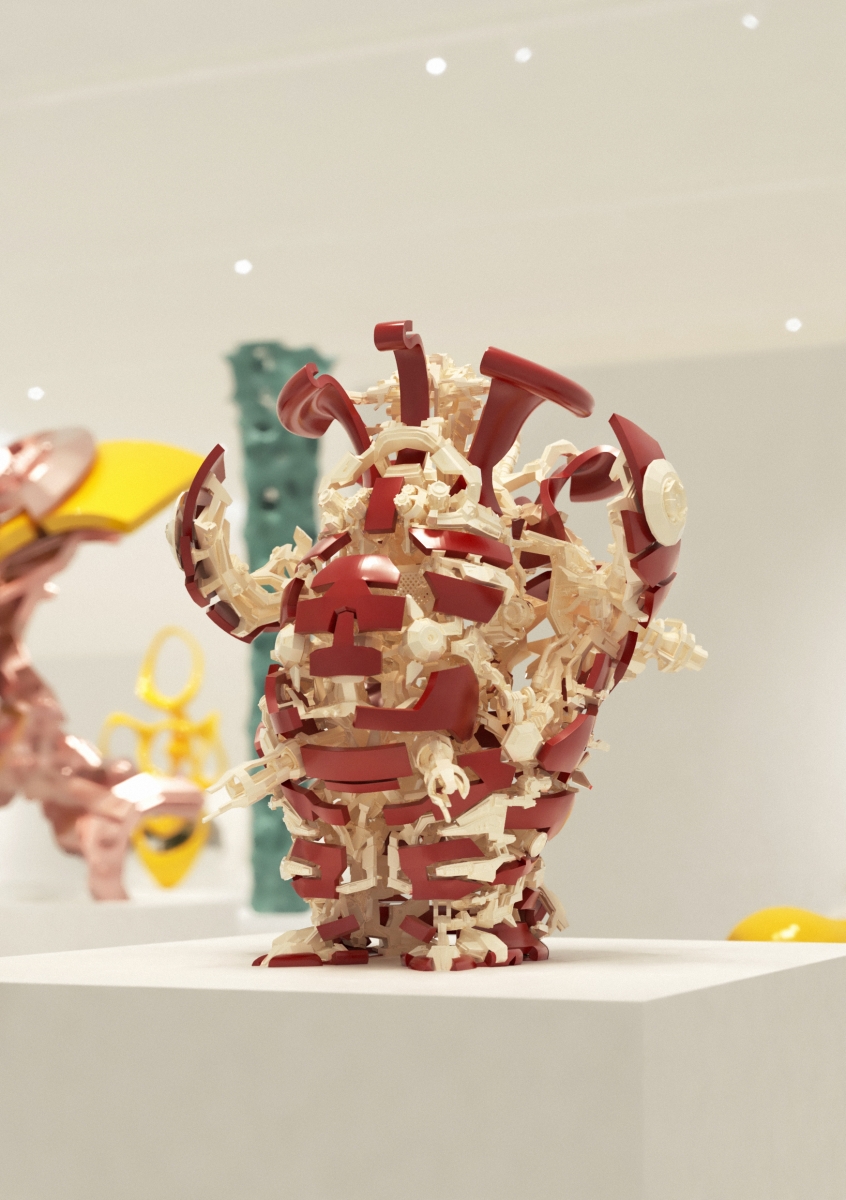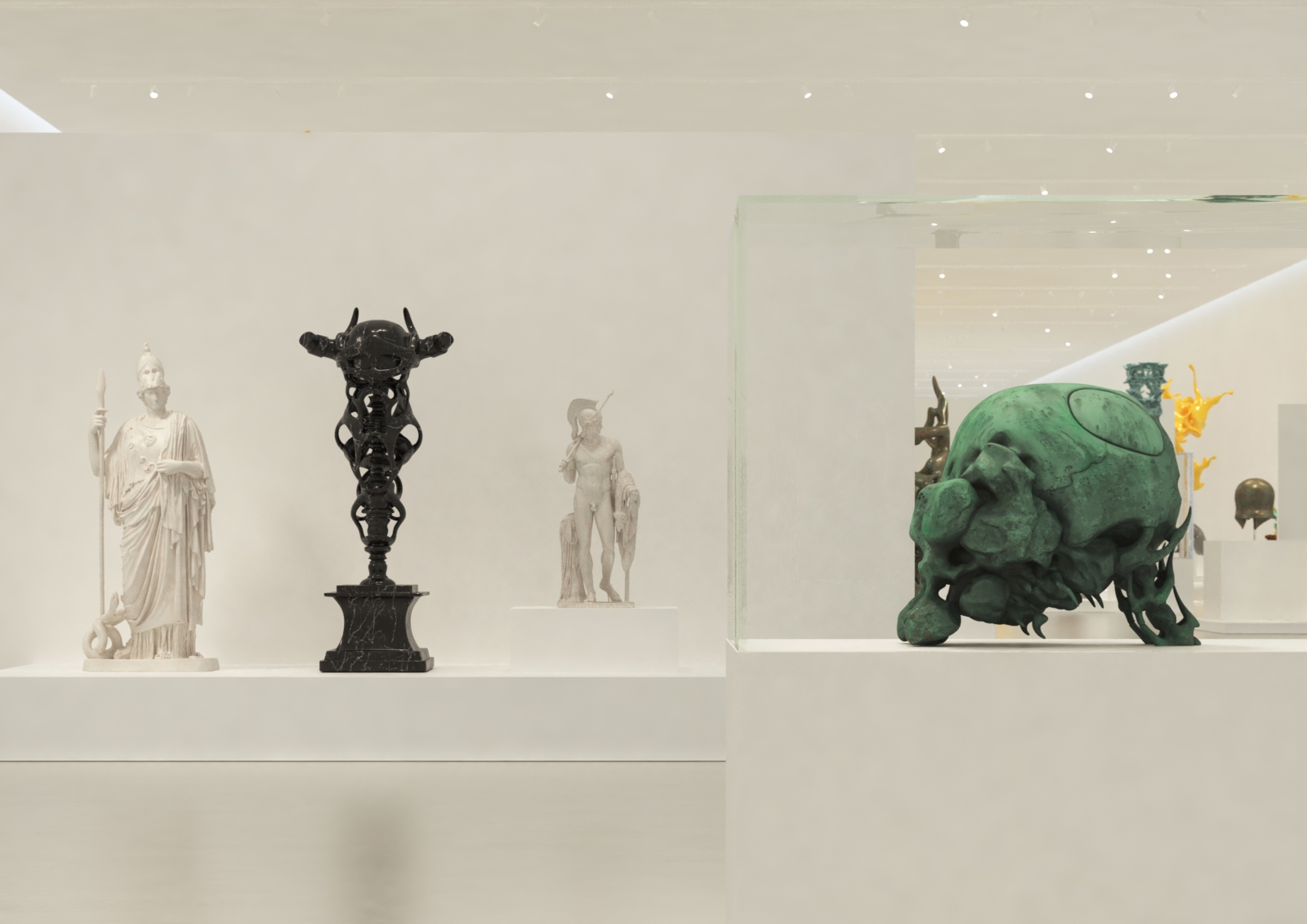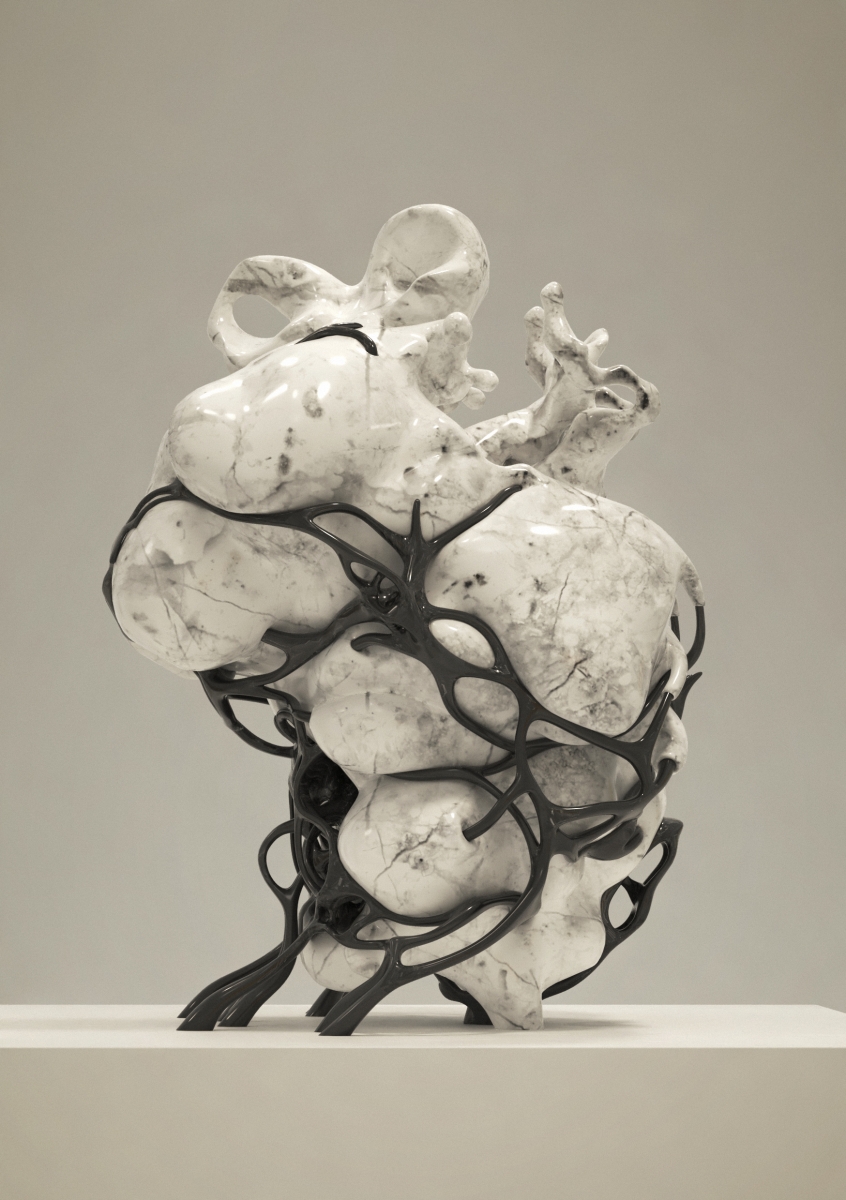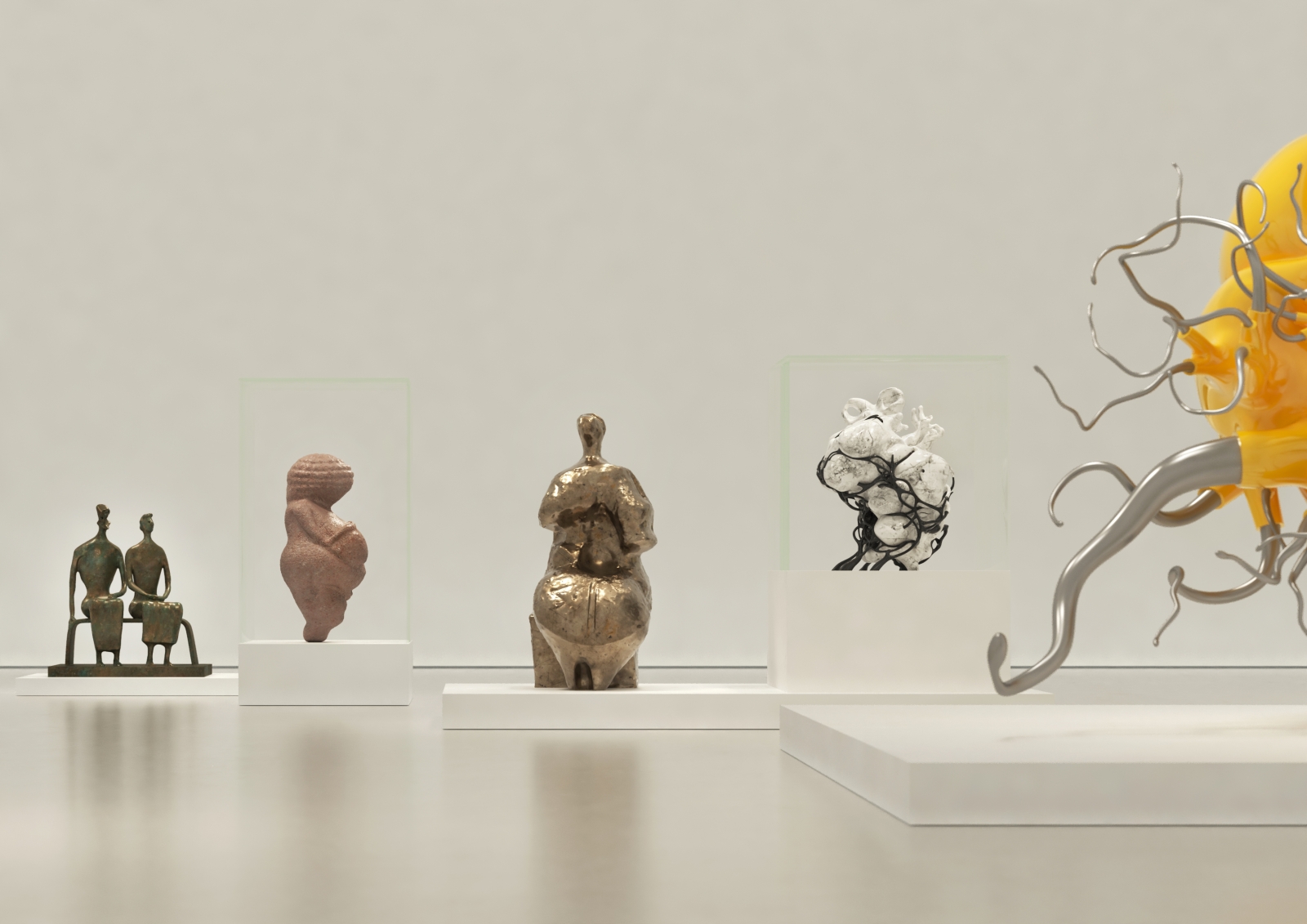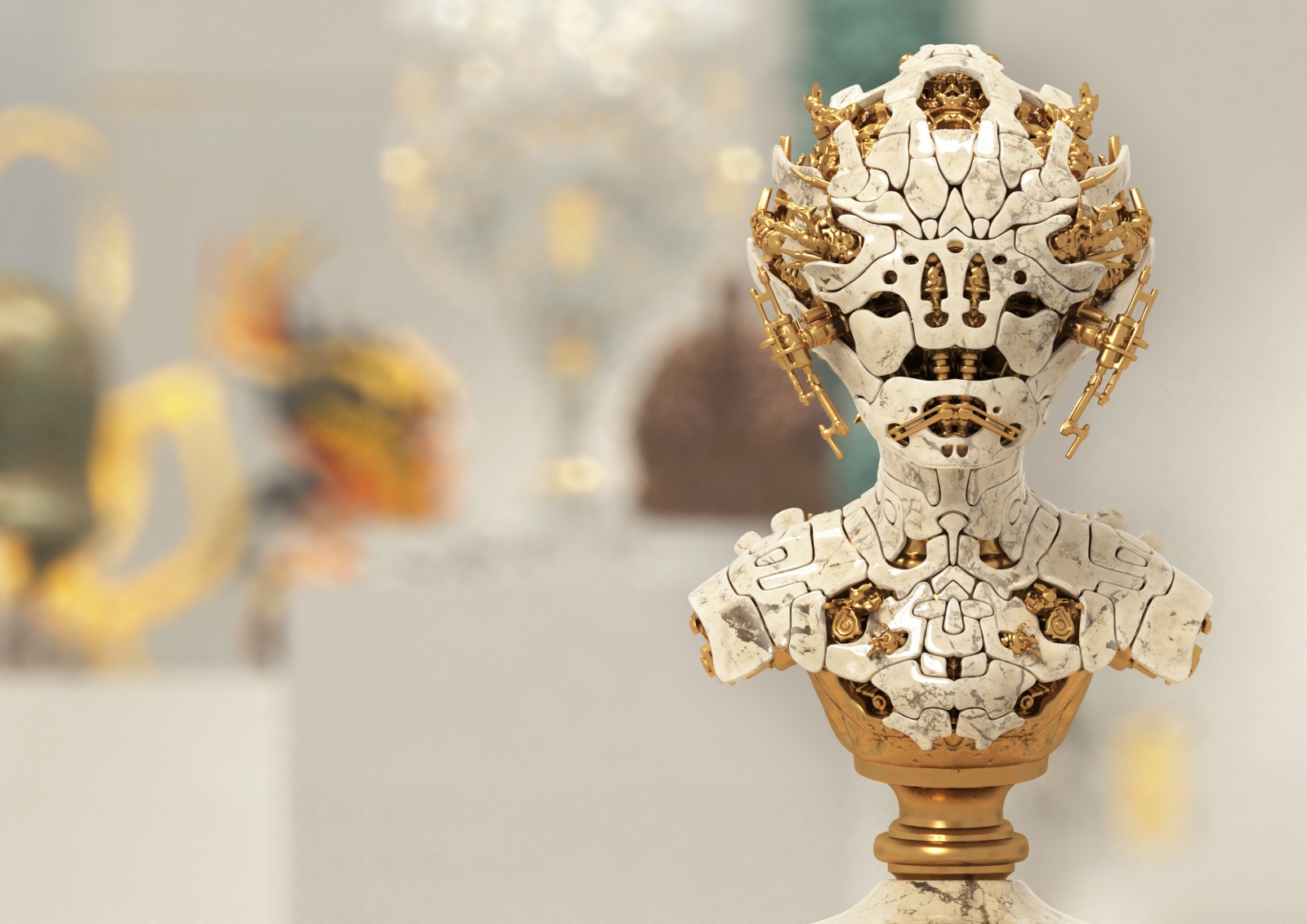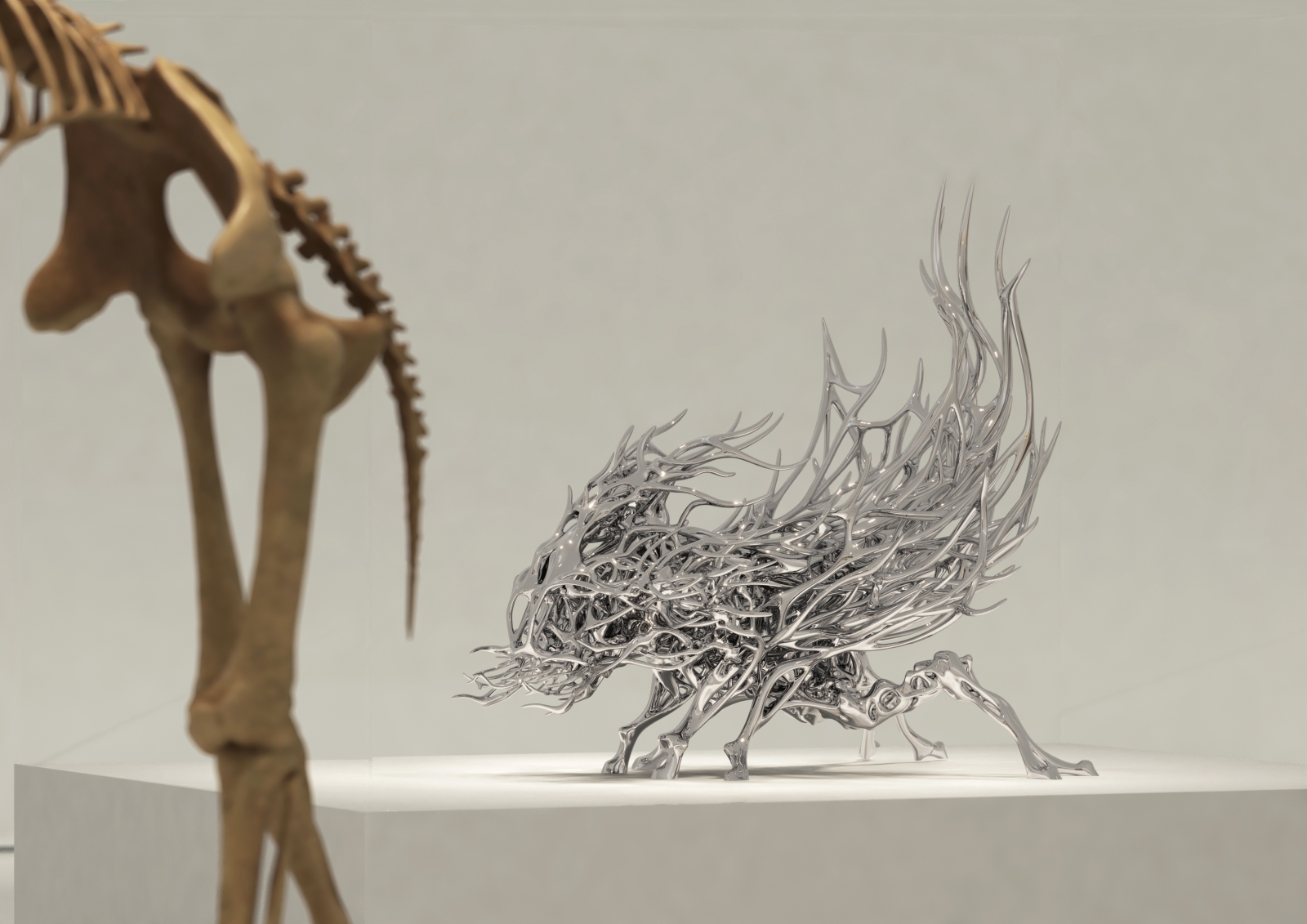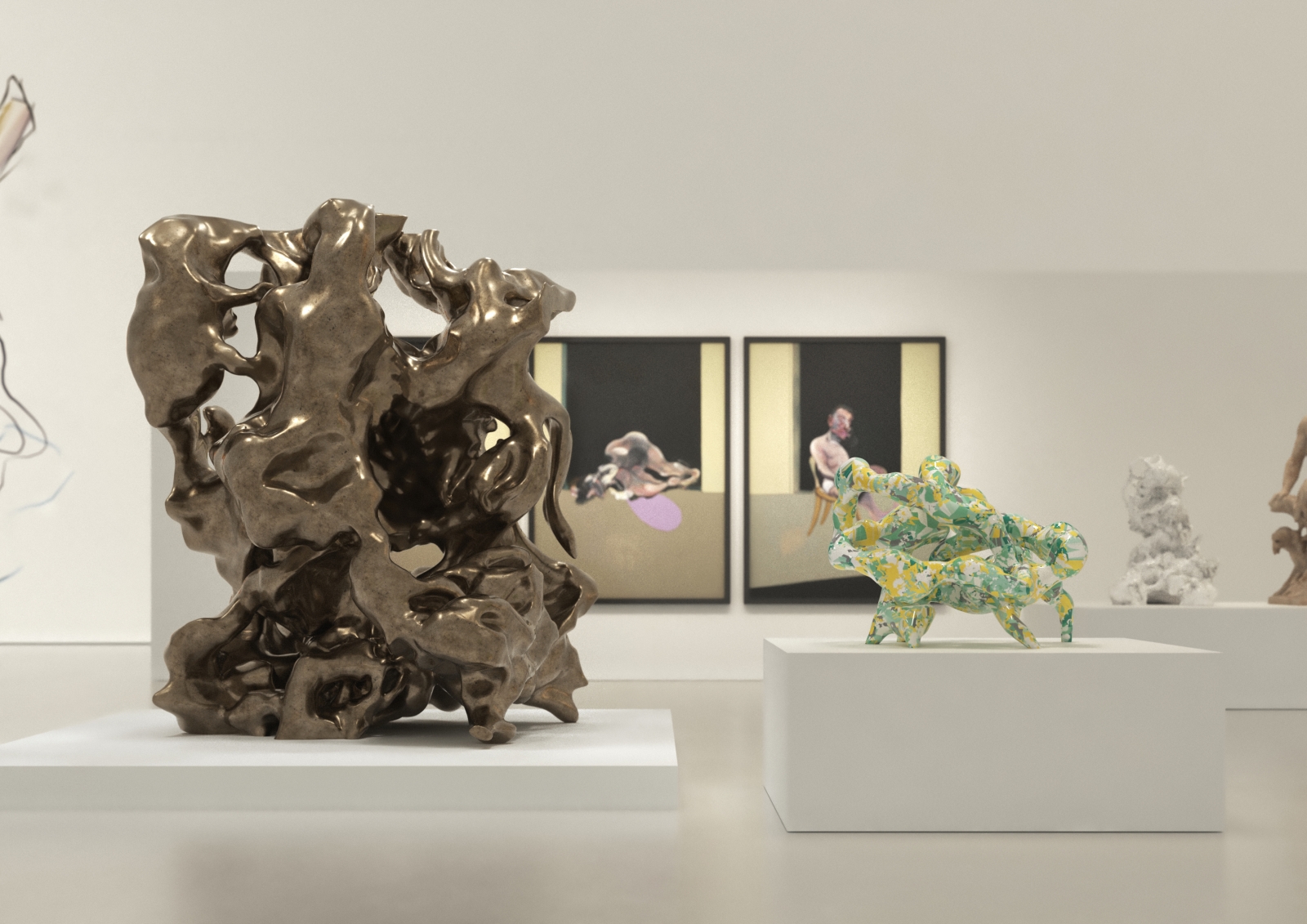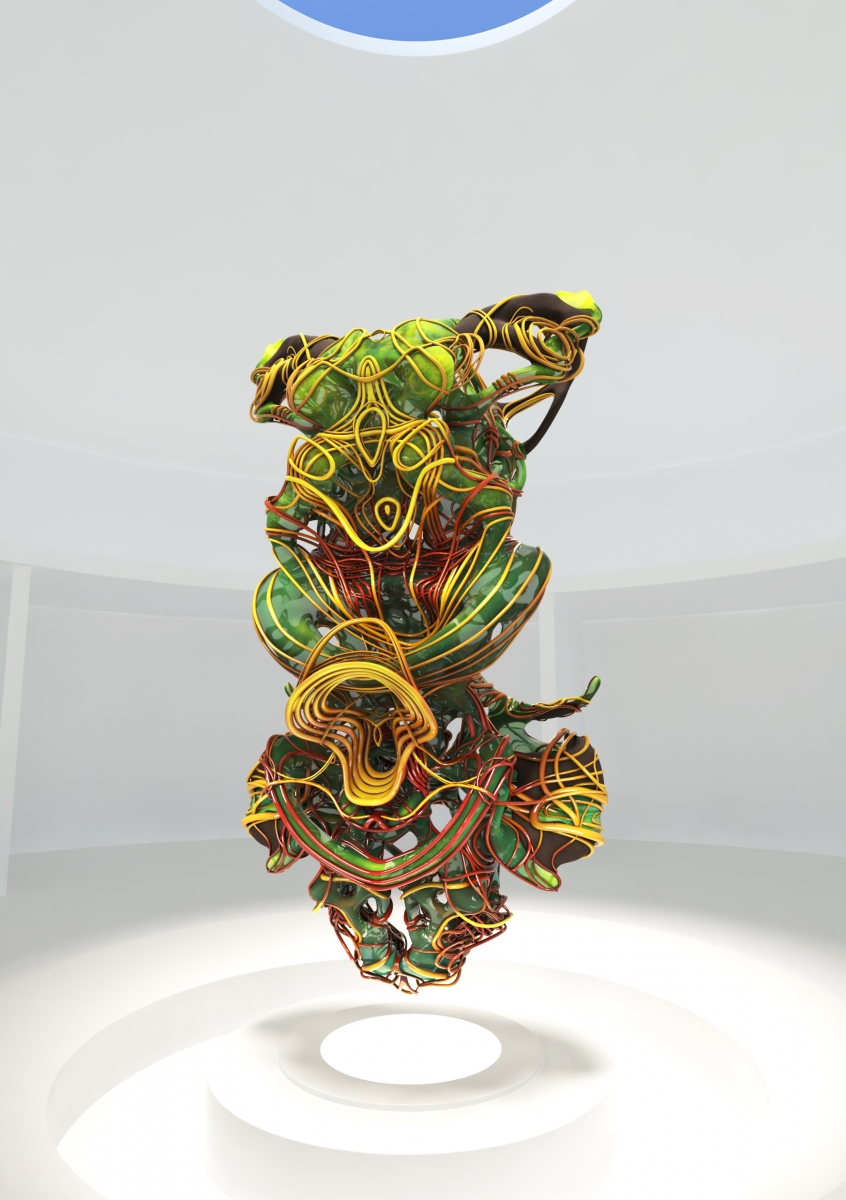MUSEION / ΜΟΥΣΕΙΟ
Curated by the imagination of Nick Ervinck
>>>ENTER<<<
Please, wait a moment untill the images are loaded.
For the best viewing experience use Google Chrome or Mozilla Firefox
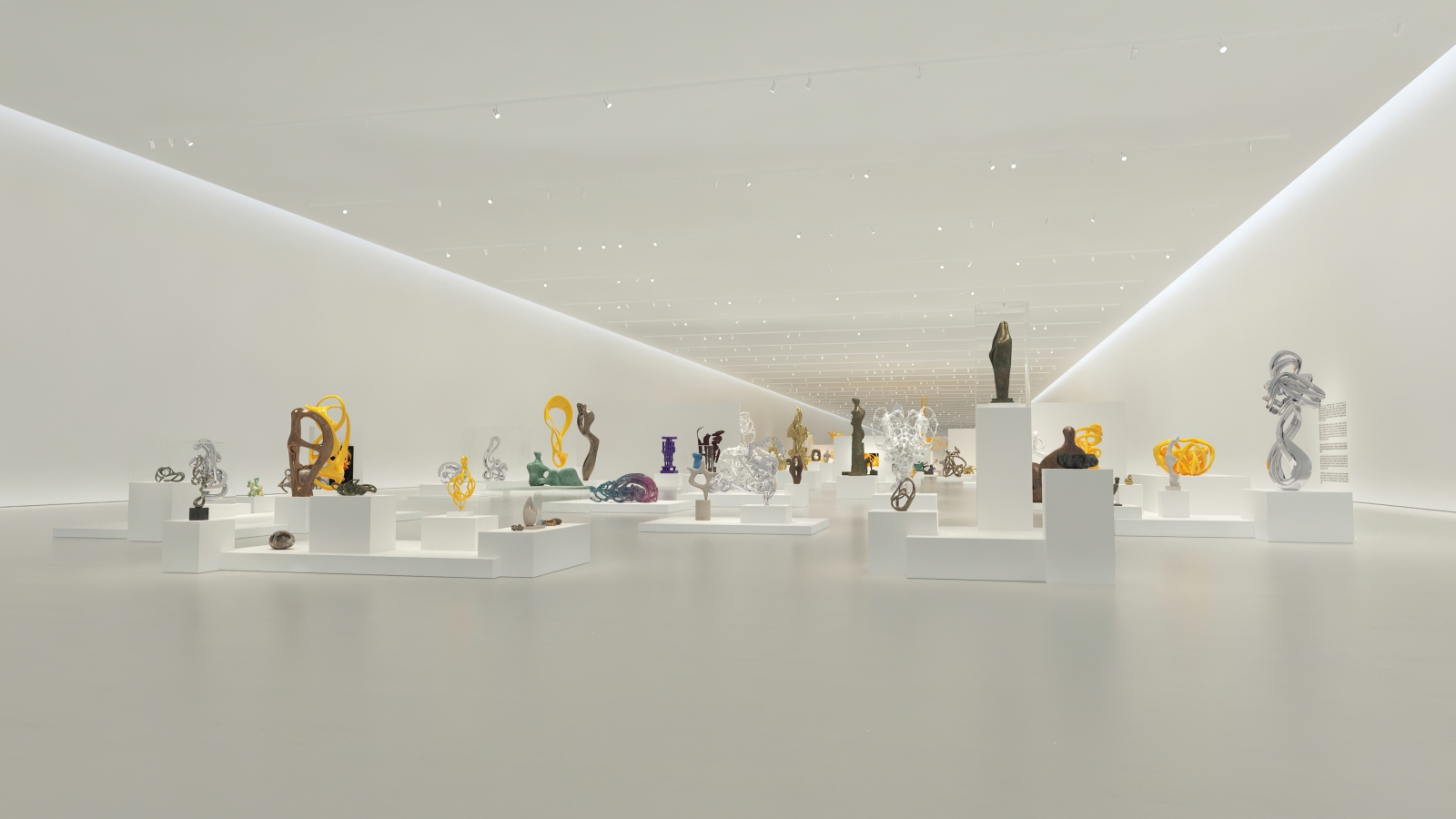
This modern incarnation of the MOUSEION—the home of scholarly works in classical times, dedicated to the nine Muses—is the setting for a dialogue between traditional forms of art and architecture and me.As daughters of Mnemosyne, goddess of memory, the Muses preserved ancient knowledge and inspired new ideas, forms and worldviews. Just like the original, this MOUSEION presents a unique assemblage of art and science. And just as the Temple of the Muses in Alexandria, with its famous library, sought to understand the contemporary world, the collection of artworks in my virtual MOUSEION call into question specific aspects of our own recent past. |
Nick Ervinck in dialogue with Henry Moore, Barbara Hepworth, Francis Bacon, Hans Arp, Lyn Chadwick, Auguste Rodin, Antoine Bourdelle, Michelangelo Buonarroti.
|
FRONT PORCH
Will we ever leave behind the Anthropocene, the first geological era to unequivocally show the impact of human activity on Earth’s climate and cosmic atmosphere? Are we at a turning point in history or is that just an illusion? The world certainly seems to have reached its most heterogenous point so far, constantly in movement and endlessly surprising. This protean state of affairs certainly presents an exciting challenge for artists.
|
This is a museum of hybridity, and as such, nearly everything you see is in flux. As an artist, I continually change materials and vary my use of perspectives and colours. The result is works that evoke contradictory feelings: from pleasure and delight to alienation and fear of the uncanny. This innovative formal language is unexpected and raises the inevitable question: what is this actually about?
|
BLOB
My work represents how I experience the world in all its chaotic beauty, limitless grandeur and poetic charm. In contrast to the BOX format that we generally see in architecture, with its horizontals, verticals and angular spaces, the BLOB is amorphous, round, playful and unpredictable. Unsurprisingly, the West has long rejected this so-called formlessness: does it not represent the antithesis of our culture’s desire to control and rationalise our environment?
|
For me, BLOB is all about a freedom that flows outwards; admittedly a puzzling freedom, and that’s what makes it so attractive to an artist. It represents the desire to be sucked into another world, explore other dimensions and therefore step outside of quotidian reality. In that sense it is driven by the power of attraction that is at once ancient and contemporary, active both on and outside this earth, in very concrete as well as symbolic terms.
|
 |
|
ROCKS
During a walk in the Yuyuan Garden in Shanghai, I encountered Gonshi rocks for the first time: naturally hollowed-out rocks, they evoke all sorts of associations and can even take on the shapes of landscapes, people, animals and mythical figures.
|
I make holes to explore the interior of sculptures, to create movement and to trigger a sort of subcutaneous experience. I want the blob form that I discovered in these rock gardens to suck the viewer into a world of wondrous shapes and rapidly expanding holes.
|
 |
|
PLANTS
The perforated Gonshi rocks, asymmetrical and wildly chaotic as they are, are not that far removed from the still lifes painted on the Meissen vases I discovered in a London museum. For these sculptures, I effaced the natural colours from leaves, stems and fruit - as though a scientist playing God in a virtual future, subjecting them to radiation and genetic manipulation in a bid for ultimate control over humanity and nature.
|
Whatever the answers may be, my Plant Mutation Project poses the sort of bewildering questions that we generally like to avoid. Our preconceptions are challenged when the natural landscapes that we have always perceived as our familiar habitat are—much to our consternation—shown here in all their unnaturalness.
|
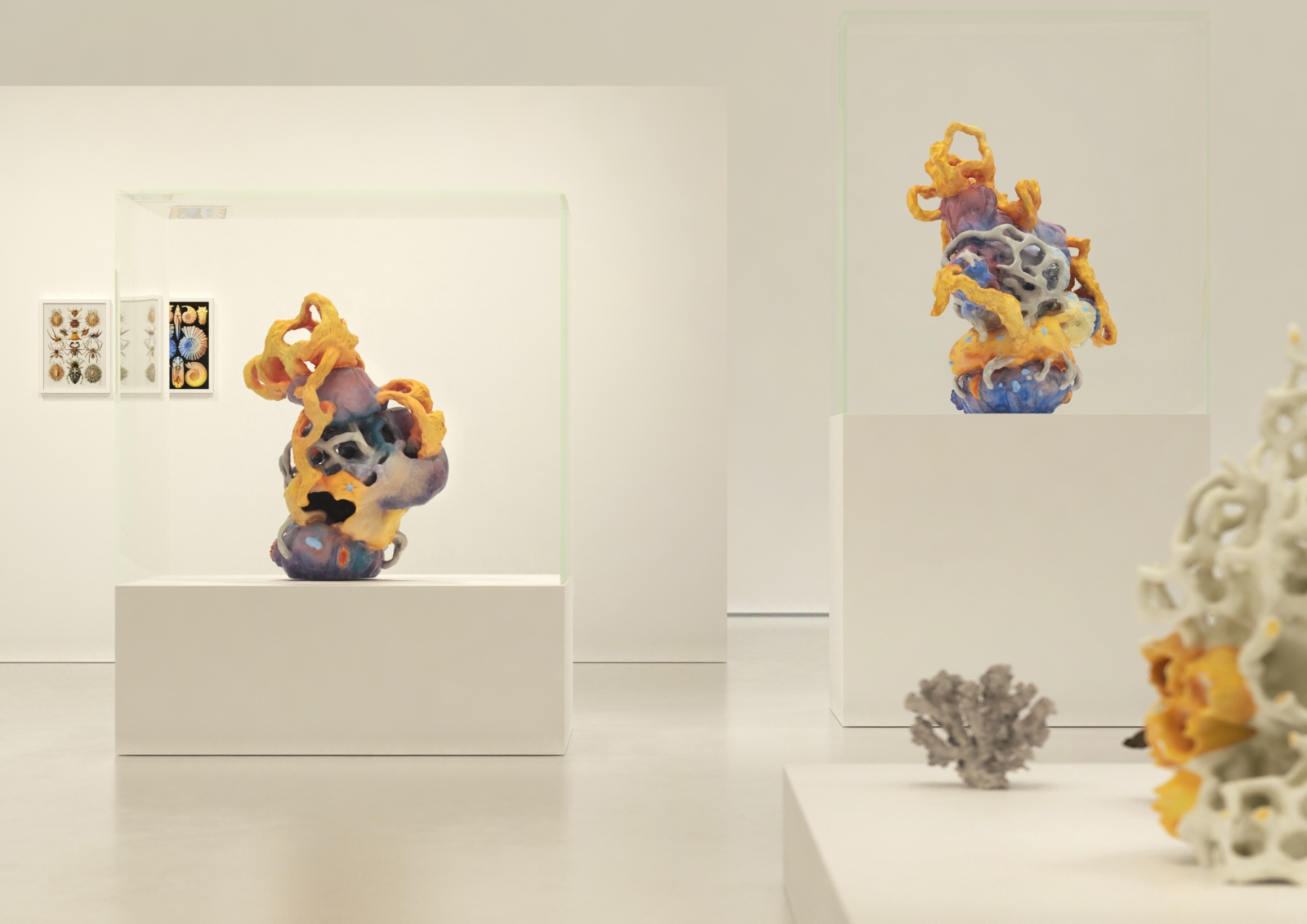 |
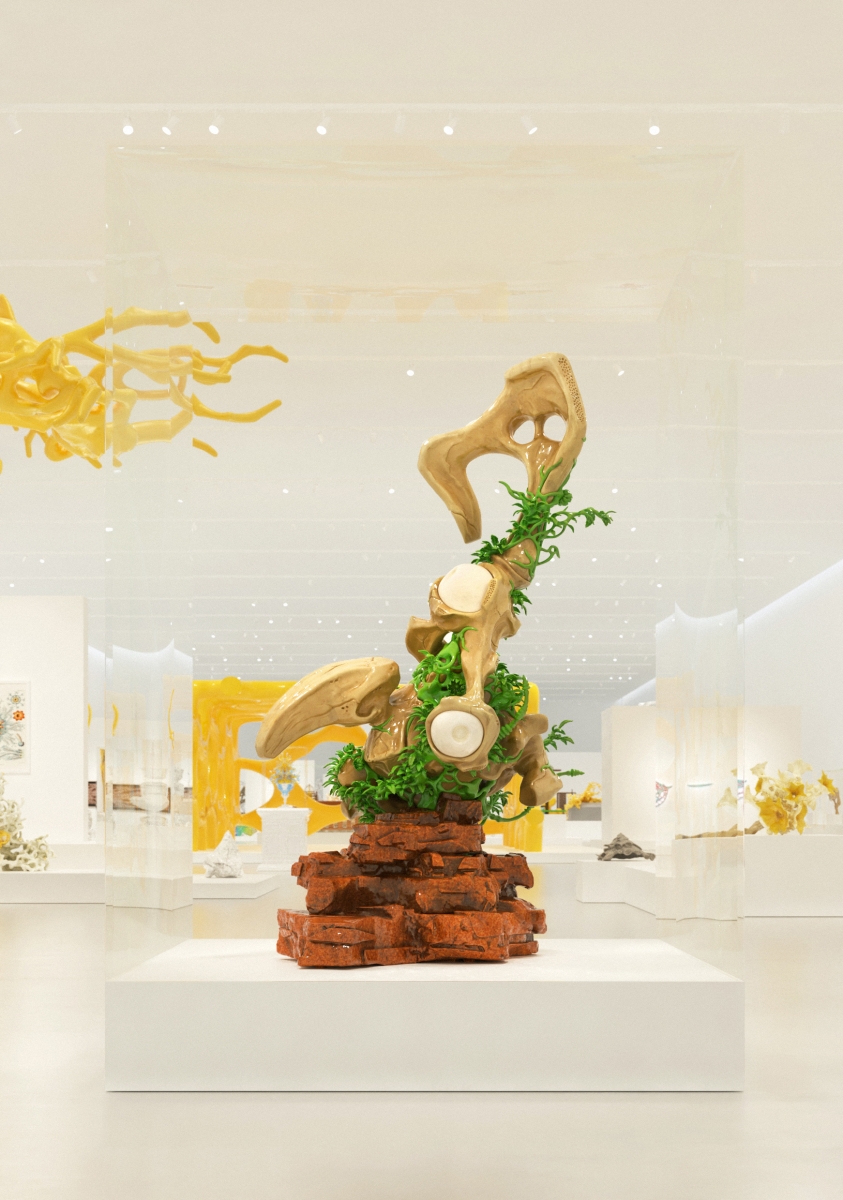 |
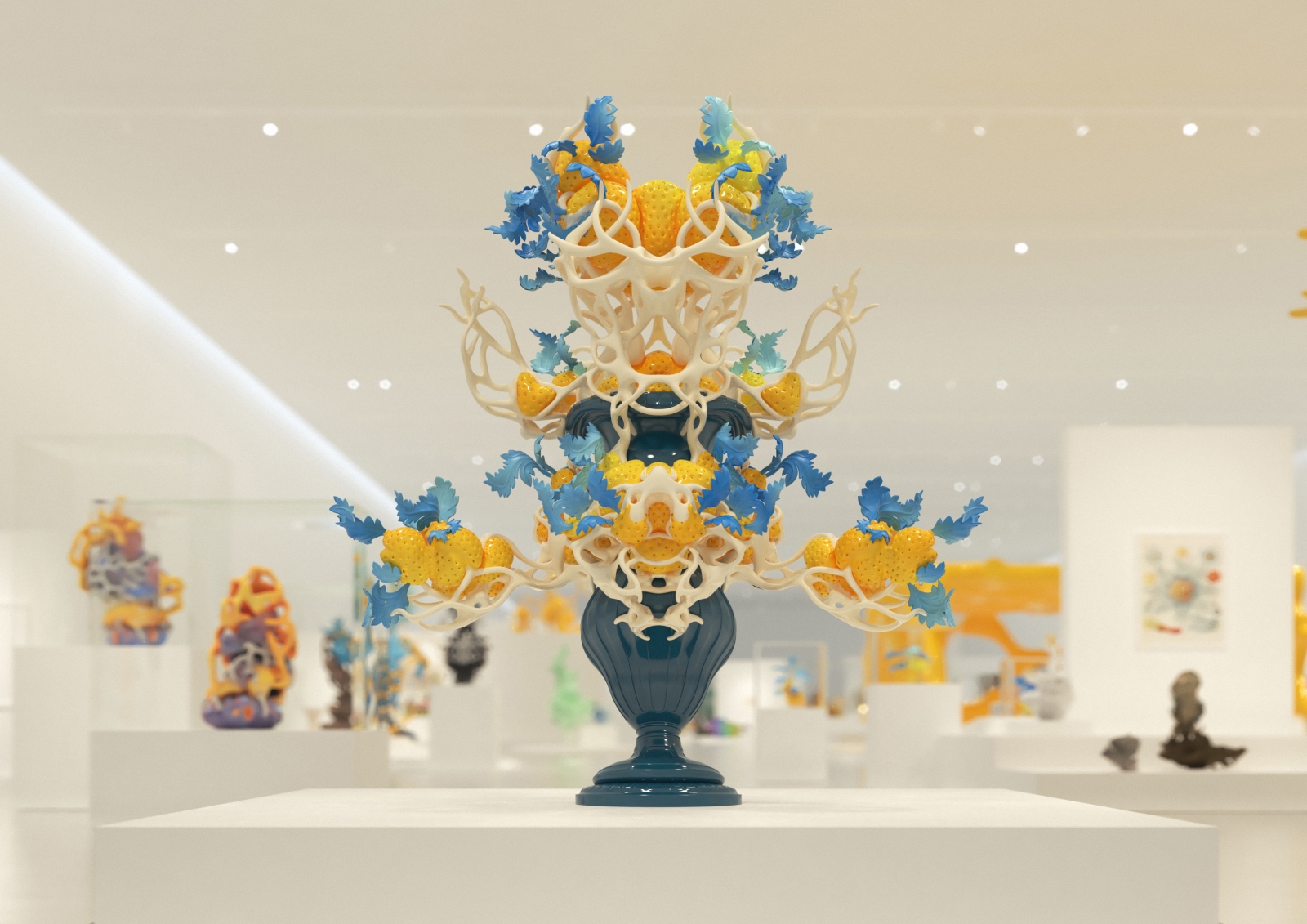
MASKS
The vibrant energy radiating from the Mask Mutation Project pieces can have an unsettling impact on the viewer. The colours employed may be partly responsible as they reference the rich hues of African patterns and motifs from the Maya and Inca cultures of Central and South America.
|
As an artist, I am aware of both the promise inherent in a new technological era and the age-old philosophical and existential problem of just being human, just being an inchoate and even unwanted child of Gaia. However, a transhumanist dream haunts me: how can I remodel the most iconic elements of a human, in particular the head, in line with the latest paradigms of evolutionary science?
|
|
|
|
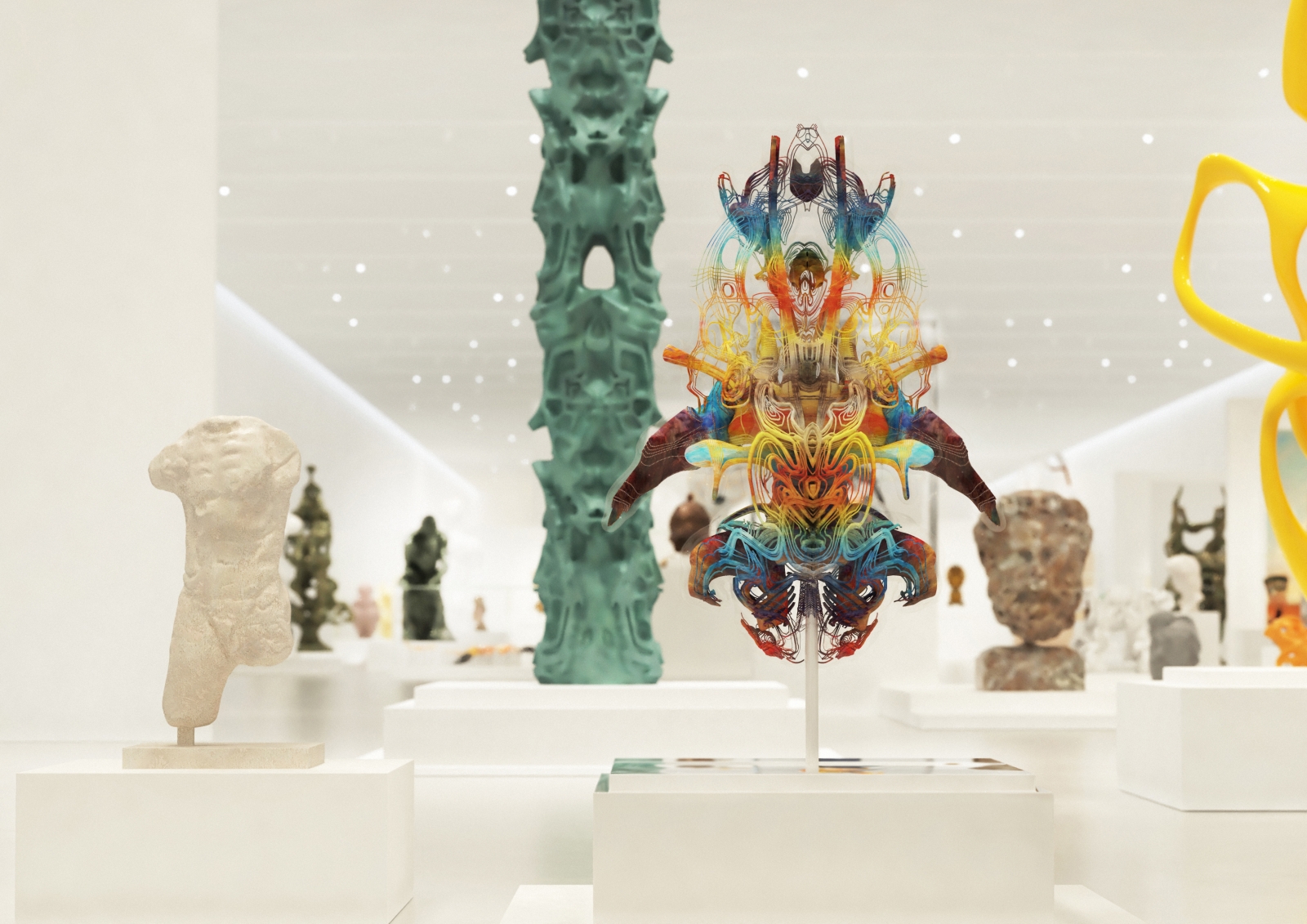
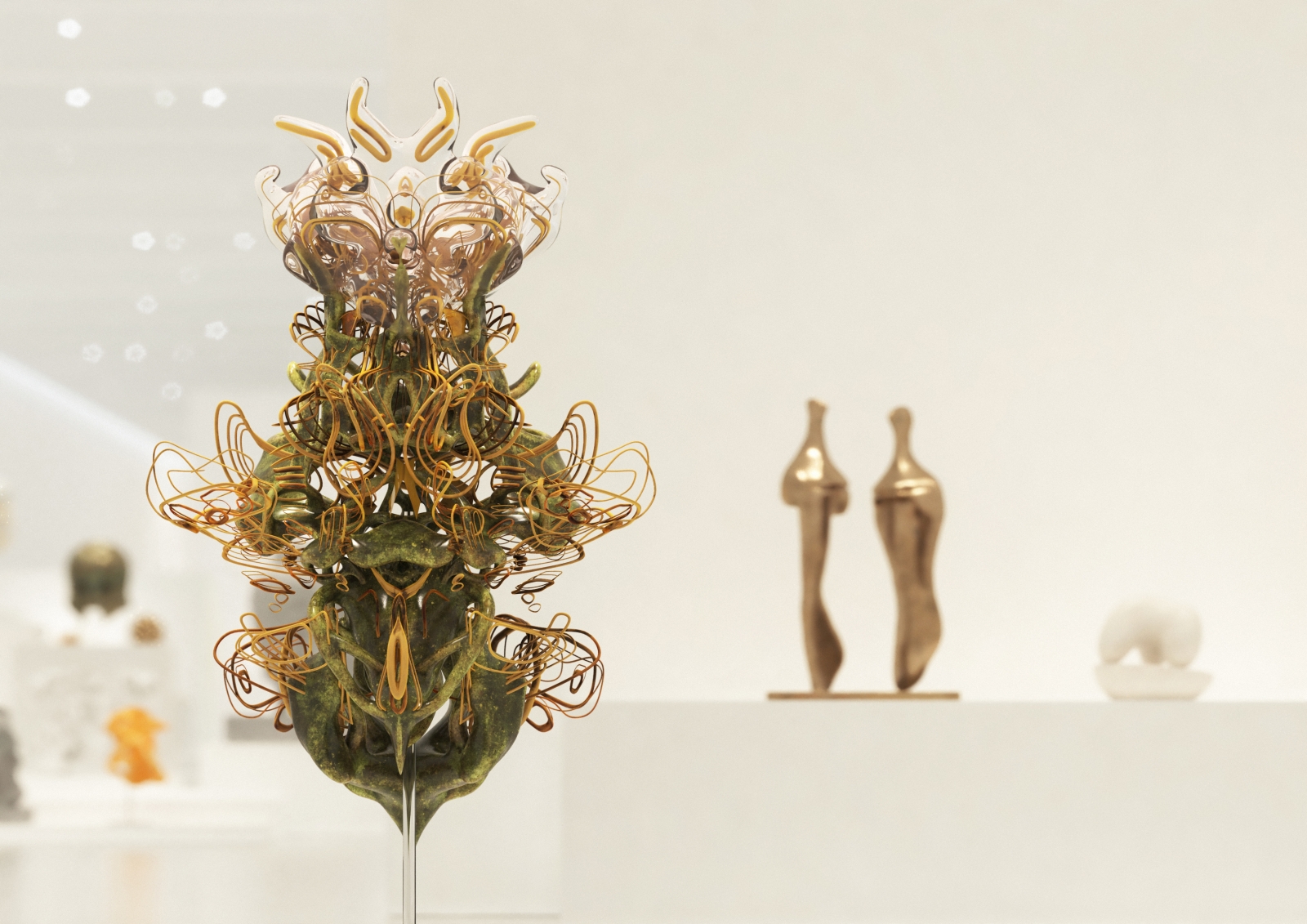
ARCHEOLOGY
The present and future are continuously affected by traces of the past. The convergence of these three time dimensions raises critical questions about the significance of the past and the potential of what is still to come. Surviving relics are testimony to both randomness and the workings of power, to the at times confusing interplay between high and low culture, between idealised imperial busts and the more Mickey Mouse type of heritage.
|
The middle path that I construct between virtual and physical worlds unshackles the imagination, recycles the historical space and poses pithy questions about the use and abuse of the past.
|
|
|
|
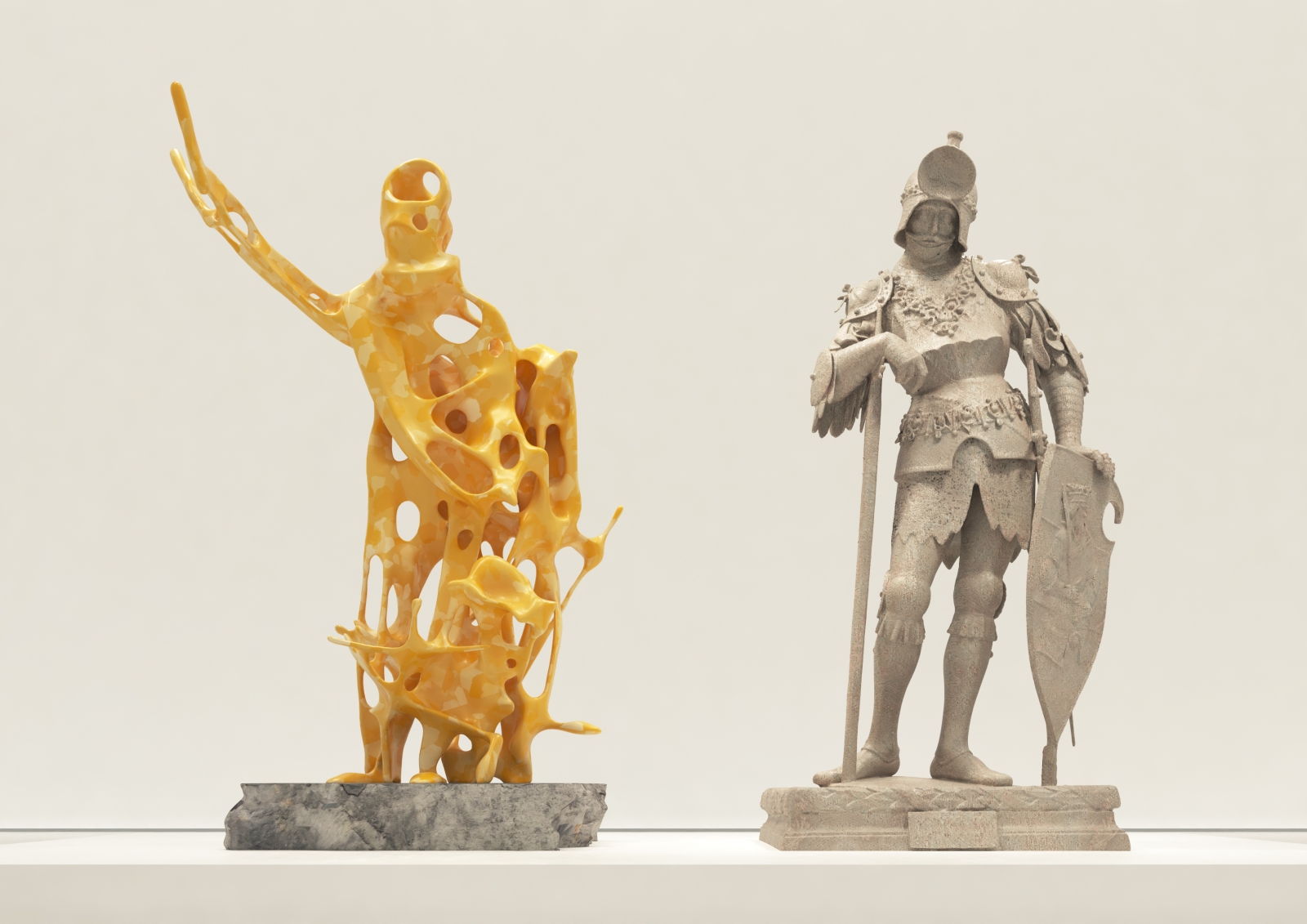
HUMANS
As though a novel form of BLOB sculpture, human organs, bones and muscles seem to be the perfect objects for giving primary form to a new alphabet for drawing the human beings of the future.
|
By using BLOB sculptures both as endoskeleton and exoskeleton, this human appeared to me to be an extremely problematic being, inhabiting an intermediate zone between outside and inside, human and animal, physical form and mythical tale.
|
|
|
|
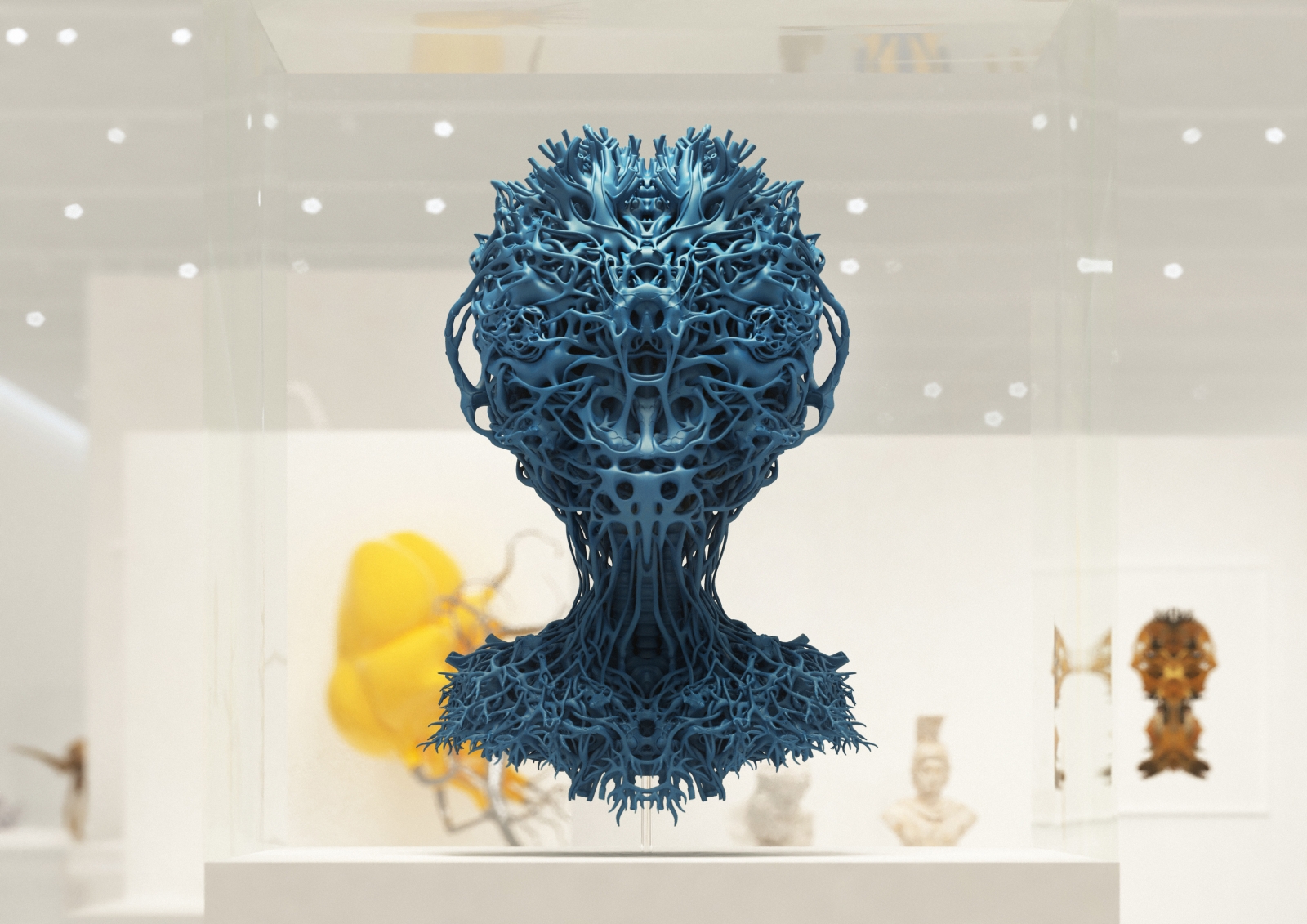
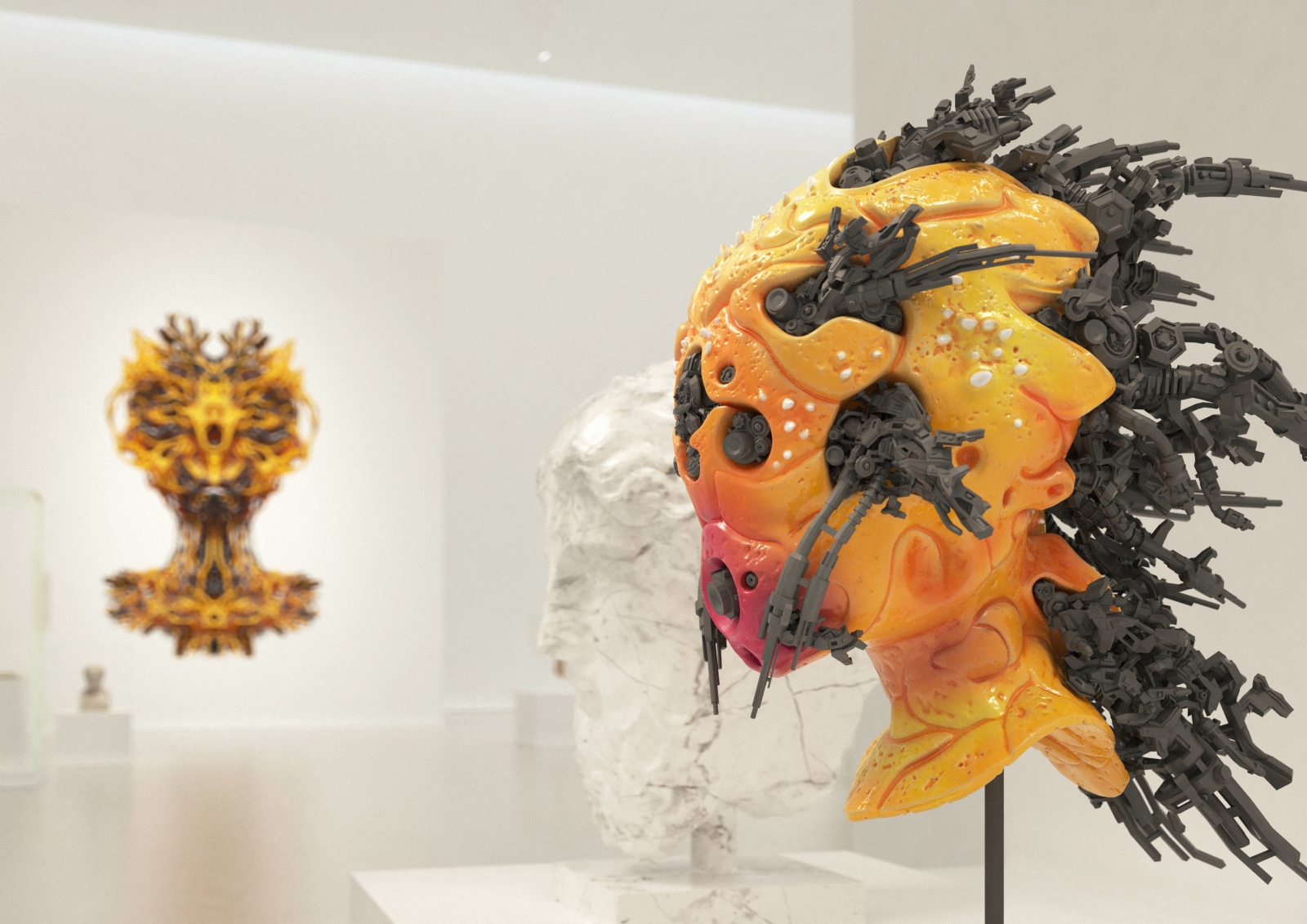
CYBORGS
The many cyborg warriors that I’ve designed hail from a variety of favourite inspirations, from science fiction and modern manga to the work of H.R. Giger. Robots, aliens and monsters inhabit my interior world and command a particular respect due to their unknowable and ambiguous nature.
|
It could be said that my cyborgs hold up a mirror to us, perhaps as the prototypes of future humans, upgraded with implants and algorithms. Once again, they testify to my desire to portray hybridity and mutation, to interface perfect symmetry with the wild and chaotic side of life.Their thorny skin conjures up the animal hides worn by the first inhabitants of Earth. Future technology could produce a thicker, more protective, polyfunctional skin as a sort of armour capable of absorbing the impacts of drastic climate change. |
 |
|
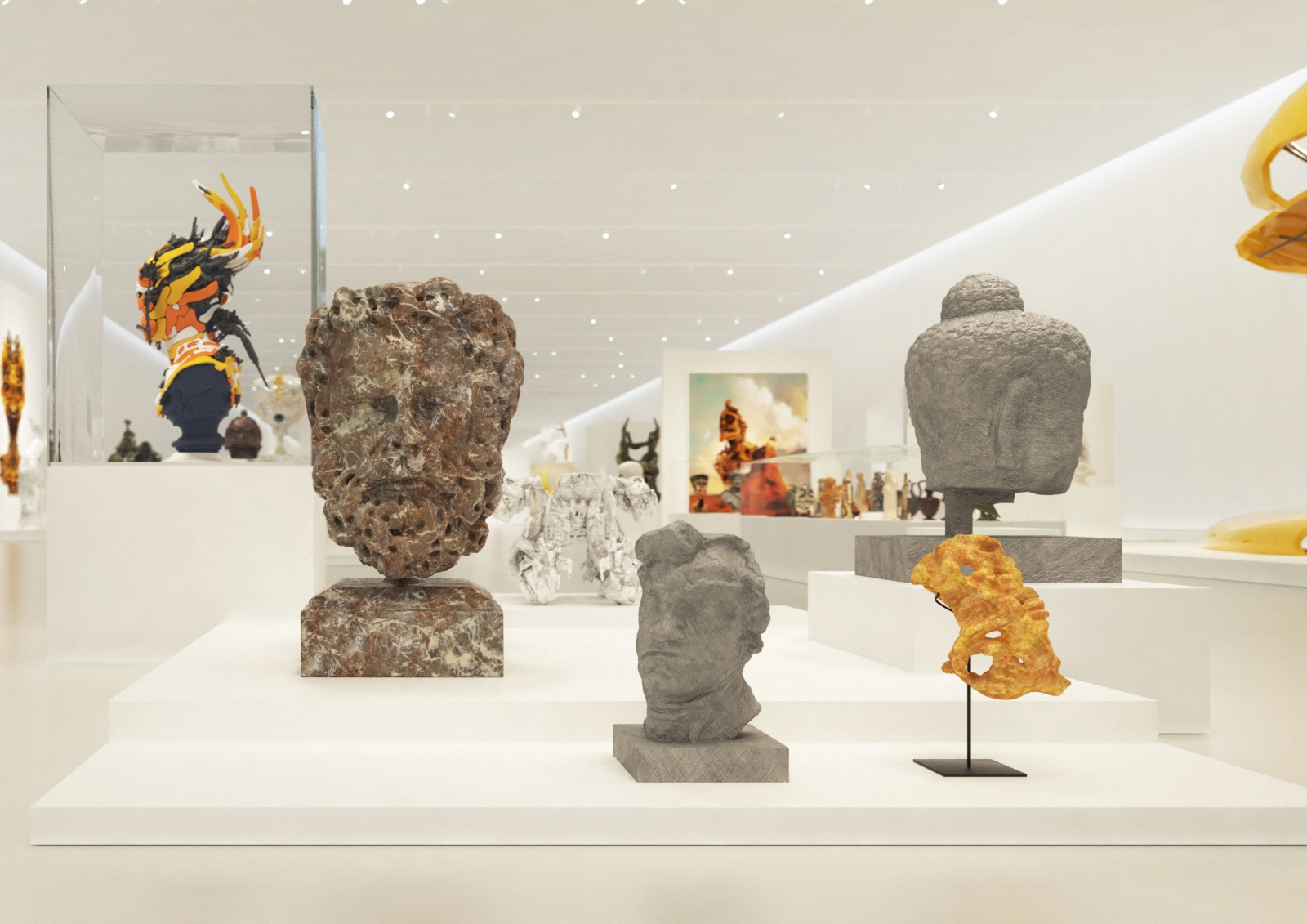
ANIMALS
Animals seem to be subject to the same profound mutations as the hollowed-out rocks in Shanghai that symbolise the energetic coherence of evolution.
|
Rampaging nature has caused them to take on the composite appearance of Greek monsters, such as the Chimera, the Hydra and the Harpies. Was it an apocalyptic disaster, the arrival of UFOs or our own shoddy handling of the environment that led to this grotesque outcome?
|
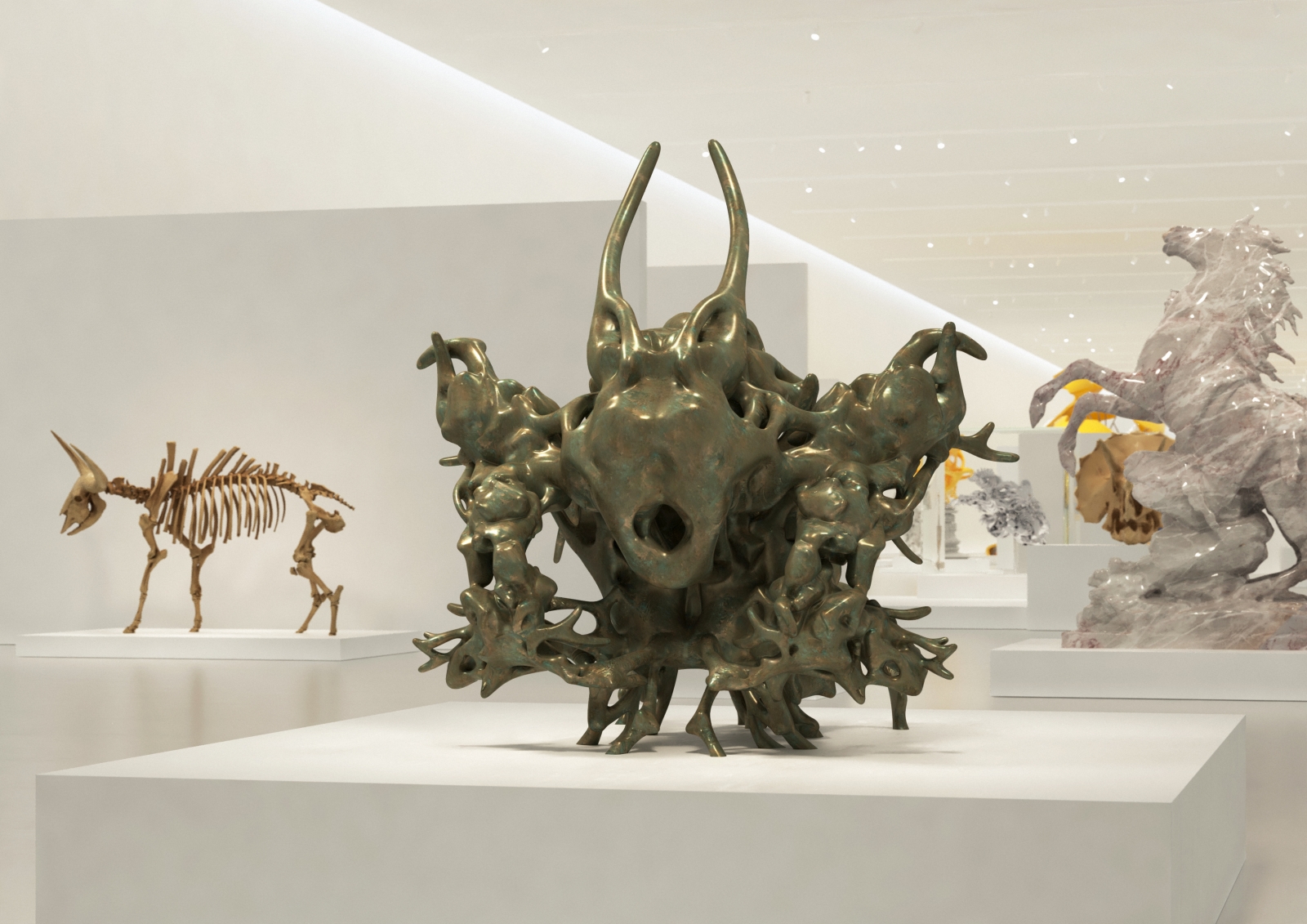 |
|
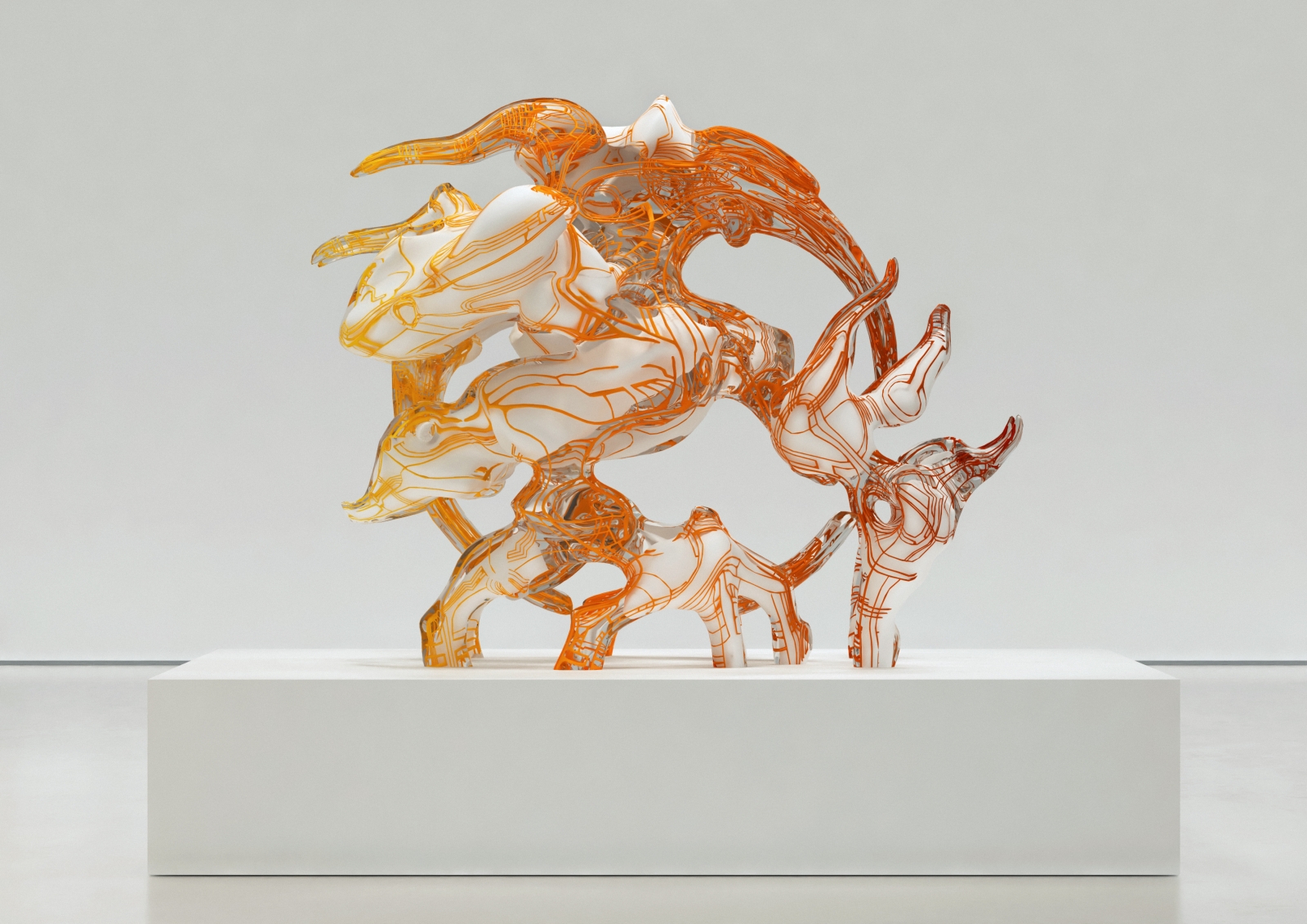
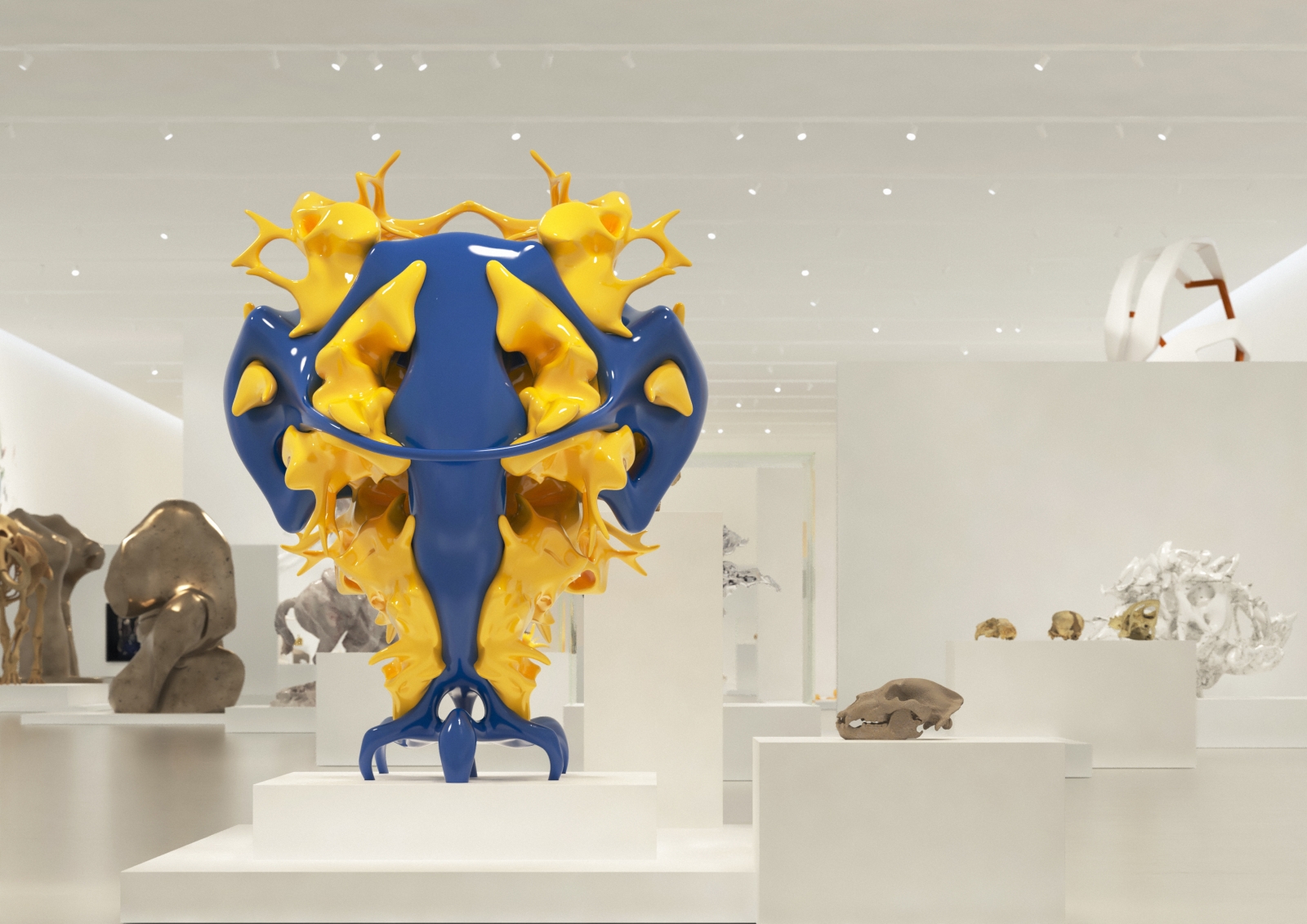
SKIN
What started out as static surfaces were eventually covered with skin, hide or shell. The smooth exteriors of the polished BLOB sculptures were disguised under a corrupt material. The bellies and breasts appear to be moving, breathing, chaotic beneath their alien substance.Cosmic spiderwebs stretch out in every direction as they possess space. Fragile yet impregnable, flowing yet bone-hard, they span both microscopically small and monumentally huge planes. |
The viewer may be reminded of the fleshy textures of Francis Bacon, or recognise a tribute to Eadward James Muybridge, who pioneered moving images with his zoopraxiscope.
|
 |
|
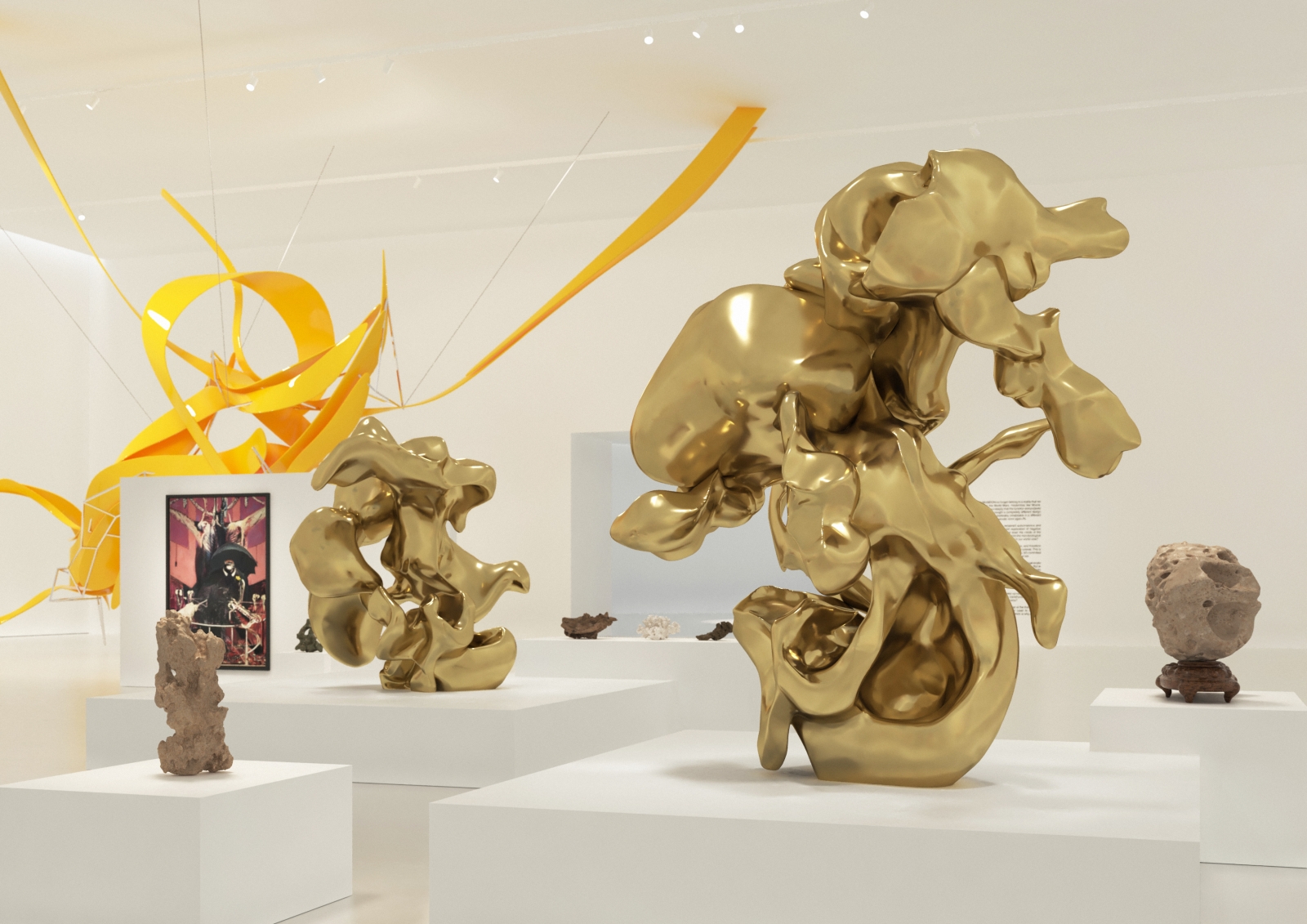
BACK PORCH
The sculptures that are included in my MOUSEION no longer belong to the reality we think we know. During the interbellum and following the war, modernists such as Moore, Hepworth and Arp challenged conventional perceptions of the function and purpose of art to such an extent that they had to be revised. Like these sculptors, I was looking for a completely different form of art, one that made the world feel other, as though a universe with an alien formal language, a landscape that inspires a sense of wonder.
|
I am thus, as an artist, hacking Darwin, remodelling DNA, seeking to regenerate plants, corals and animals after yet another mass extinction or deadly radioactive fallout. At the same time, I am constantly amazed at the intangible magnetism we possess, how it preserves our libido, love and lust, and how it would seem that our élan vital will never be quite snuffed out.
|
Thanks to the Flemish government in the context of the cultural activity premium
Thanks to prof. Freddy Decreus, Michel, Brent, Benoit, Kayleigh and the artists for this journey.
